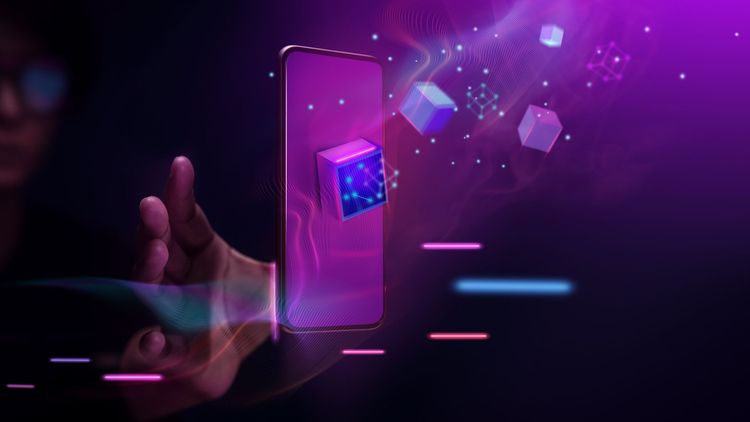
Everything You Need To Know About the Solana Blockchain
When it comes to cryptocurrency, NFTs and blockchains, Solana stands apart from other technology like ethereum or bitcoin. But what makes the Solana blockchain so different? What is it, exactly? And is Solana the future of blockchain?
What Blockchain Is Solana?
Solana is one of the few blockchains based on proof-of-history, rather than proof-of-work, like Bitcoin, or proof-of-stake, like Ethereum now, after the merge. Solana uses proof-of-stake in conjunction with PoH, and did so even before Ethereum did.
It is a public, open-source blockchain founded by Anatoly Yakovenko in 2017. Compared to ethereum, which was founded in 2013, and bitcoin, launched in 2009, it is fairly new technology.
Like many blockchains and cryptocurrencies, Solana started with a whitepaper. Unlike the famous Bitcoin whitepaper of just nine pages, the Solana whitepaper spanned 32 pages, with seven sections. The Solana whitepaper described Proof of History, a consensus mechanism that uses a reliable clock for network synchronization, which keeps track of time between computers that do not trust one another.
Yakovenko said that a PoH system would be at least 10,000 times faster than the current ethereum and bitcoin blockchains, which meant the blockchain could eventually become a global, decentralized payment platform. He first implemented a private code base in the C programming language. Another programmer, Greg Fitzgerald, suggested he re-code the project using Rust, a programming language that Fitzgerald believed would offer increased productivity. The two programmers named the project Loom, and Fitzgerald began creating an open-source prototype blockchain based on Yakovenko’s white paper.
However, Ethereum started a “Loom Network” of its own at the same time, according to Solana Documentation. Yakovenko, Fitzgerald, and a third partner, Stephen Akridge, rebranded their PoH blockchain as Solana, named after Solana Beach outside of San Diego, where the three lived and surfed together when they worked at semiconductor manufacturer Qualcomm.
Knowing the blockchain’s beginnings, launched by three friends and beach buddies, it’s appropriate that the cryptocurrency bought and sold on the blockchain is SOL, which is Latin for sun.
How Is Solana Faster?
Ultimately, the combination of PoH and PoS consensus mechanisms make transactions on the Solana blockchain faster, more sustainable and scalable. Experts say that Solana could compete with Visa as a payment processing platform someday due to its speed, low congestion and low fees. It is one of the first steps toward worldwide decentralized finance.
Is Solana a Coin or Blockchain?
Solana is both a blockchain, which also houses NFTs and manages smart contracts, and a coin or cryptocurrency. Often, the coin goes by the name SOL and is traded by the designation SOL on crypto exchanges.
Is Solana a Private Blockchain?
Solana is not a private blockchain and was never designed to be private. It is a public blockchain network, which means that other users can access the blockchain to perform transactions.
Further, because the Solana blockchain is open source, which means developers can use it in multiple ways. Solana can be used to create, sell or buy non-fungible tokens, to create and operate decentralized finance applications, to create and manage smart contracts, and to create blockchain games as part of Web3 or the metaverse.
Because of its open-source nature, it has become a prominent platform for minting, buying, selling and trading NFTs.
What Makes Solana Different from Other Blockchains
Solana uses a consensus mechanism called Proof-of-History or PoF, along with the PoS consensus mechanism recently adopted by ethereum during the Ethereum Merge. Yakovenko’s whitepaper, “Solana: A new architecture for a high performance blockchain” first addressed the issues of blockchains of that time.
“Current publicly available blockchains do not rely on time, or make a weak assumption about the participant’s ability to keep time. Each node in the network usually relies on their own local clock without knowledge of any other participant’s clocks in the network.”
The lack of a trusted time source, Yakovenko pointed out, means that when a message timestamp is used to accept the validity of a node, there’s no way to verify it. When PoH is combined with PoS, PoH can reduce messaging, resulting in faster transactions. In 2017, Yakovenko predicted that up to 710k transactions per second could be possible. Solana hasn’t quite reached those processing speeds today, but it can currently process up to 65,000 transactions per second, theoretically. It also has lower fees and a smaller carbon footprint than other blockchains.
What Is Proof of Stake?
It’s important to understand the Proof-of-Stake, or PoS, mechanism that underlies the Solana blockchain. Known to be more eco-friendly and faster than Proof-of-Work consensus, PoS allows stakers — similar to miners in a PoW blockchain — to stake their crypto to a validator. When a validator is selected, that person earns SOL coins as a new block in the chain is created.
However, without PoH consensus in place, there is no good way to determine which validator came first in the chain and it takes more time to do so. Ethereum, for instance, takes roughly 12 seconds to create a new block, while Solana takes just 400 milliseconds.
Source : news.google.com/__i/rss/rd/articles/CBMiQmh0dHBzOi8vd3d3LmdvYmFua2luZ3JhdGVzLmNvbS9pbnZlc3RpbmcvY3J5cHRvL3NvbGFuYS1ibG9ja2NoYWluL9IBAA?oc=5 undefined - November 02, 2022